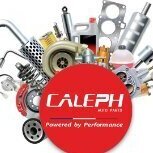-
Welcome to Auto Parts Forum
Whether you are a veteran automotive parts guru or just someone looking for some quick auto parts advice, register today and start a new topic in our forum. Registration is free and you can even sign up with social network platforms such as Facebook, X, and LinkedIn.
5 Must Have Car Accessories for A Road Trip
-
Similar Topics
-
By CALEPH Auto Parts
The car air filter is a vital component in the car engine intake system. Its function is to filter out dust, sand and other impurities in the air entering the engine to reduce the wear of these impurities on the internal parts of the engine and protect the normal operation of the engine. The performance of the air filter is directly related to the life of the engine and the fuel efficiency of the car.
There are two main types of air filters: dry and wet. Dry filters usually consist of paper filter elements, while wet filters may include oil bath filters, in which air passes through oil to filter impurities. In modern cars, dry paper filter elements are widely used because of their high efficiency and low cost.
The recommended cycle for maintaining and replacing air filters is usually 10,000 to 20,000 kilometers, but this may vary depending on the vehicle's use environment and driving conditions. In areas with poor air quality or dusty areas, more frequent replacement may be required. If the air filter is too dirty, it may cause insufficient engine intake, reduced power, increased fuel consumption, and even increased engine wear.
The process of replacing the air filter is relatively simple and mainly includes the following steps:
1. Turn off the engine and open the car hood.
2. Find the location of the air filter, which is usually on the side of the engine compartment.
3. Loosen the clamp or screw that fixes the air filter box.
4. Remove the old filter element and check whether it is damaged or excessively dirty.
5. Clean the inside of the air filter housing to remove dust and impurities.
6. Install the new air filter element and make sure it is properly placed.
7. Reinstall the air filter box and fix it.
In daily maintenance, compressed air can be used to blow dust from the inside of the filter element to the outside, but oil or water should be avoided for cleaning, as this may damage the filter element. If the filter element is already damaged or excessively dirty, a new filter element should be replaced.
Proper maintenance and timely replacement of air filters are essential to maintaining engine performance and extending its service life. Car owners should determine the best time to replace the air filter based on the recommendations of the car manufacturer and their own driving environment.
🔗Here are more products you want: link hidden, please login to view
💬Leave a message to tell us your needs, our professional team is always at your service!
-
By CALEPH Auto Parts
The car air filter (commonly known as air filter or air filter) plays a very important role in the car engine system. Here are the main functions of the car air filter:
1. Filter impurities:
It is able to capture dust, sand, pollen and other particulate matter in the air and prevent these impurities from entering the engine.
2. Protect engine components:
By filtering out these impurities, the air filter helps protect the components inside the engine, such as cylinders, pistons and valves, from wear and damage.
3. Maintain engine performance:
Clean air is essential for the efficient combustion of the engine. A good air filter ensures that the engine gets the right amount of clean air, which helps improve fuel efficiency and power output.
4. Extend engine life:
By reducing debris that can cause friction and damage, the air filter helps extend the life of the engine.
5. Improve fuel efficiency:
When the engine is able to work with clean air, it can burn fuel more efficiently, which can lead to better fuel economy.
6. Reduce Emissions:
A clean air filter can also help reduce harmful emissions, ensuring that the engine runs at its best and doesn't burn fuel in an incomplete or dirty manner.
7. Prevent Engine Knock:
Impurities can cause engine knocking or knocking noises, which are signs of inefficient combustion. A good air filter can help prevent this.
Regularly checking and replacing air filters is part of your car's regular maintenance to ensure these benefits are maintained.
🔗The air filter products here are suitable for you: link hidden, please login to view
💬Leave a message to tell us your needs, our professional team is always at your service!
-
By GreenGears Auto Limited
The automotive industry is undergoing a profound transformation, driven by the synergistic forces of connectivity and autonomous driving. These technological advancements are poised to reshape the transportation landscape, promising safer, more efficient, and more accessible mobility solutions for individuals and societies alike.
Connectivity, the ability of vehicles to communicate with each other and their surroundings, is laying the foundation for intelligent transportation systems that can revolutionize the way we navigate our roads. Autonomous driving, on the other hand, envisions a future where vehicles can operate without human intervention, offering the potential for unprecedented levels of safety and convenience.
This in-depth exploration delves into the complexities of connectivity and autonomous driving, examining their underlying technologies, current progress, challenges, and the transformative impact they are expected to have on our world.
The Evolution of Connectivity: From Isolated Vehicles to Interconnected Networks
Historically, vehicles have been isolated entities on the road, relying solely on the driver's perception and decision-making. However, the advent of connectivity has transformed cars into sophisticated communication hubs, capable of gathering and exchanging vast amounts of data in real-time.
This transformation has been made possible by a convergence of technological advancements, including:
Sensor Technology: Vehicles are now equipped with a wide range of sensors, including cameras, radars, lidars, and ultrasonic sensors, that enable them to perceive their surroundings in detail. These sensors collect data about the vehicle's position, speed, proximity to other objects, and road conditions. Wireless Communication: Technologies like Dedicated Short-Range Communications (DSRC) and Cellular Vehicle-to-Everything (C-V2X) allow vehicles to communicate wirelessly with each other and with infrastructure elements like traffic lights and road signs. Cloud Computing and Data Analytics: The vast amounts of data generated by connected vehicles are processed and analyzed in the cloud, enabling real-time decision-making and the development of intelligent transportation systems. Types of Connectivity:
Connectivity in the automotive realm manifests in various forms, each with its own distinct benefits:
Vehicle-to-Vehicle (V2V) Communication: Enables direct communication between vehicles, allowing them to share information about their speed, location, and intended maneuvers. This creates a virtual awareness network, enhancing safety by alerting drivers to potential hazards and enabling cooperative driving behaviors.
Vehicle-to-Infrastructure (V2I) Communication: Facilitates communication between vehicles and roadside infrastructure, such as traffic lights, road signs, and toll booths. This allows for optimized traffic flow, reduced congestion, and improved safety through real-time information sharing.
Vehicle-to-Network (V2N) Communication: Connects vehicles to cloud-based services and applications, providing access to real-time traffic updates, navigation assistance, and other infotainment features.
Vehicle-to-Pedestrian (V2P) Communication: Enables vehicles to communicate with pedestrians and cyclists, particularly in urban environments. This can enhance safety for vulnerable road users by alerting them to the presence of vehicles and potential dangers.
Benefits of Connectivity:
The widespread adoption of connectivity has the potential to unlock numerous benefits for individuals, society, and the environment:
Enhanced Safety: By facilitating real-time data exchange and situational awareness, connectivity can help prevent accidents and reduce fatalities on the roads. Features like collision avoidance systems, lane departure warnings, and blind spot monitoring leverage connectivity to provide drivers with timely alerts and assistance.
Improved Traffic Flow: Connectivity enables intelligent transportation systems to optimize traffic flow by adjusting signal timings, providing real-time traffic information, and recommending alternative routes. This can lead to reduced congestion, shorter travel times, and improved fuel efficiency.
Enhanced Convenience and Comfort: Connected vehicles offer a plethora of features that enhance the driving experience, including:
Remote vehicle access and control In-car entertainment and infotainment systems Personalized navigation and route optimization Real-time vehicle diagnostics and maintenance alerts Over-the-air software updates Environmental Sustainability: By optimizing traffic flow and promoting fuel-efficient driving behaviors, connectivity can contribute to reducing greenhouse gas emissions and improving air quality.
The Path to Autonomous Driving: From Assisted to Fully Autonomous
Autonomous driving, often referred to as self-driving technology, aims to automate the driving experience entirely, freeing drivers from the need to control the vehicle. This technology is being developed in stages, with increasing levels of autonomy, as defined by the Society of Automotive Engineers (SAE):
Levels of Autonomous Driving
Level Description 0 No automation. The driver is fully in control of the vehicle at all times. 1 Driver assistance. The vehicle provides limited assistance with tasks such as steering or accelerating, but the driver remains primarily in control. 2 Partial automation. The vehicle can control both steering and acceleration/deceleration under certain conditions, but the driver must remain alert and ready to take control at any time. 3 Conditional automation. The vehicle can perform all driving tasks under specific conditions, but the driver may still need to intervene in certain situations. 4 High automation. The vehicle can perform all driving tasks under most conditions, and the driver may be able to disengage completely. 5 Full automation. The vehicle can perform all driving tasks under all conditions, and there is no need for a human driver. Key Technologies Enabling Autonomous Driving
The development of autonomous vehicles relies on a complex interplay of various technologies:
Sensor Fusion: Combines data from multiple sensors like cameras, radars, and lidars to create a comprehensive and accurate picture of the vehicle's surroundings. Artificial Intelligence (AI) and Machine Learning: Enables the vehicle to perceive, interpret, and respond to its environment in real-time, making decisions based on complex algorithms and learned patterns. High-Definition Mapping: Provides detailed maps of the environment, including road layouts, lane markings, traffic signs, and other relevant information. Vehicle Control Systems: Actuators and control systems enable the vehicle to execute commands from the autonomous driving system, such as steering, accelerating, braking, and changing lanes. Current State of Autonomous Driving
While fully autonomous vehicles (Level 5) remain a long-term goal, significant progress has been made in developing and deploying lower levels of autonomy.
Advanced Driver-Assistance Systems (ADAS): Features like adaptive cruise control, lane keeping assist, and automatic emergency braking 1 are becoming increasingly common in new vehicles, representing Level 1 and Level 2 autonomy. Robotaxis and Autonomous Shuttles: Several companies are testing and deploying autonomous vehicles in controlled environments, such as designated areas within cities or university campuses. These vehicles often operate at Level 4 autonomy, with limited human supervision. Commercial Applications: Autonomous trucks and delivery vehicles are being developed and tested for logistics and transportation applications, offering the potential for increased efficiency and reduced costs. Challenges and Concerns
Despite the significant progress, several challenges and concerns remain on the road to fully autonomous driving:
Technological Limitations: Current sensor technologies and AI algorithms still struggle to handle complex and unpredictable scenarios, such as adverse weather conditions, construction zones, or interactions with pedestrians and cyclists. Safety and Liability: Ensuring the safety of autonomous vehicles and determining liability in the event of accidents are critical concerns that need to be addressed through robust testing, validation, and regulatory frameworks. Public Acceptance: Gaining public trust and acceptance of autonomous vehicles will require addressing concerns about safety, job displacement, and the potential for misuse of the technology. Infrastructure: Widespread adoption of autonomous vehicles will necessitate significant investments in infrastructure, including intelligent transportation systems, high-definition maps, and communication networks. The Transformative Impact of Connectivity and Autonomous Driving
The convergence of connectivity and autonomous driving has the potential to revolutionize the transportation sector and society as a whole:
Improved Safety: By eliminating human error, which is a leading cause of accidents, autonomous vehicles have the potential to significantly reduce fatalities and injuries on the roads. Studies suggest that autonomous vehicles could reduce traffic fatalities by up to 90%.
Increased Efficiency: Connected and autonomous vehicles can optimize traffic flow, reduce congestion, and improve fuel efficiency. This can lead to significant time and cost savings for individuals and businesses, as well as a reduction in greenhouse gas emissions.
Enhanced Accessibility: Autonomous vehicles can provide mobility solutions for individuals who are unable to drive, such as the elderly or those with disabilities, enhancing their independence and quality of life.
New Business Models: The advent of autonomous vehicles could give rise to new business models and services, such as ride-hailing, car-sharing, and delivery fleets. These models could transform the way we think about transportation, making it more accessible and affordable for everyone.
Urban Transformation: Autonomous vehicles could lead to a redesign of urban spaces, with less need for parking lots and potentially more space for green areas and pedestrian zones.
The Road Ahead: Navigating the Challenges and Opportunities
The path to a fully connected and autonomous transportation future is filled with both challenges and opportunities. As technology continues to advance and regulatory frameworks evolve, we can expect to see a gradual but steady shift towards a more automated and interconnected transportation landscape.
The automotive industry, along with governments, technology companies, and other stakeholders, will need to collaborate to address the challenges and ensure the safe and responsible deployment of these technologies. Public education and engagement will also be crucial in building trust.
www.GreenGearsAuto.com
-
By CALEPH Auto Parts
The car air filter is an important part of the engine intake system. Its main function is to filter out dust and impurities in the air entering the engine to protect the normal operation of the engine. Regular inspection and replacement of air filters is essential to maintain vehicle performance and fuel efficiency.
When to replace the car air filter?
Generally speaking, the recommended replacement cycle of the air filter is 10,000 to 20,000 kilometers, but this cycle varies according to the vehicle's use environment and driving conditions. If you often drive in dusty or poor air quality environments, you may need to replace it more frequently. For example, in areas with heavy sand and dust, it may need to be cleaned every 5,000 to 7,500 kilometers, while in severely polluted environments, it may need to be checked every 3,000 kilometers. If the air filter is blocked, the indicator light alarm should also be replaced immediately.
How to check the air filter?
1. Open the engine hood and find the location of the air filter.
2. Check whether there is dust accumulation on the outside of the air filter.
3. Gently tap or use compressed air to blow the filter element from the inside to the outside to remove dust.
4. If the filter element is black or damaged, or if there is too much dust after beating, it is recommended to replace it.
Steps to replace the air filter:
1. Determine the location of the air filter and open the engine hood.
2. Remove the screws or buckles that fix the air filter box.
3. Take out the old air filter and clean the dust in the filter box.
4. Install the new air filter and ensure that it is well sealed.
5. Reinstall the air filter box and close the engine hood.
Note:
During the replacement process, make sure to use a genuine air filter that matches the vehicle model.
Be careful not to damage the filter element when replacing it, and avoid contamination of the filter element by oil or other impurities.
Check whether the seal of the air filter box is intact. If it is damaged, it should be replaced in time.
Please check and replace the air filter regularly according to your vehicle usage and environmental conditions, combined with the recommendations of the vehicle manufacturer, to ensure the best performance of the engine and extend its service life. If you are not sure how to do it, it is recommended to consult a professional auto repair technician.
🔗For more automotive knowledge, please visit:
link hidden, please login to view 💬Leave a message to tell us your needs, our professional team is always at your service!
-
-





Recommended Posts
Join the conversation
You can post now and register later. If you have an account, sign in now to post with your account.
Note: Your post will require moderator approval before it will be visible.